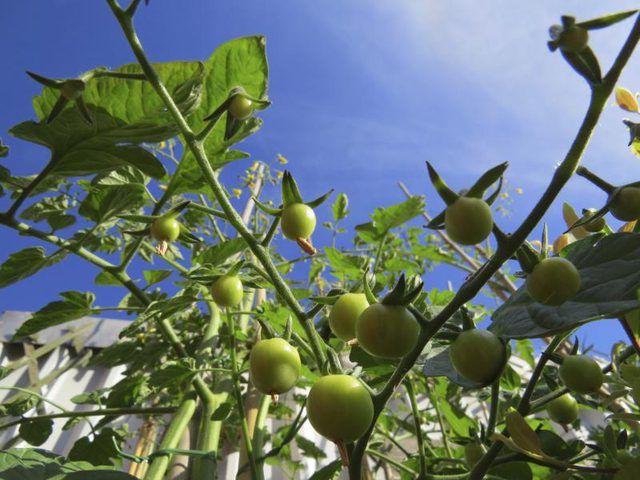Bulbs
Flower Basics
Flower Beds & Specialty Gardens
Flower Garden
Garden Furniture
Garden Gnomes
Garden Seeds
Garden Sheds
Garden Statues
Garden Tools & Supplies
Gardening Basics
Green & Organic
Groundcovers & Vines
Growing Annuals
Growing Basil
Growing Beans
Growing Berries
Growing Blueberries
Growing Cactus
Growing Corn
Growing Cotton
Growing Edibles
Growing Flowers
Growing Garlic
Growing Grapes
Growing Grass
Growing Herbs
Growing Jasmine
Growing Mint
Growing Mushrooms
Orchids
Growing Peanuts
Growing Perennials
Growing Plants
Growing Rosemary
Growing Roses
Growing Strawberries
Growing Sunflowers
Growing Thyme
Growing Tomatoes
Growing Tulips
Growing Vegetables
Herb Basics
Herb Garden
Indoor Growing
Landscaping Basics
Landscaping Patios
Landscaping Plants
Landscaping Shrubs
Landscaping Trees
Landscaping Walks & Pathways
Lawn Basics
Lawn Maintenance
Lawn Mowers
Lawn Ornaments
Lawn Planting
Lawn Tools
Outdoor Growing
Overall Landscape Planning
Pests, Weeds & Problems
Plant Basics
Rock Garden
Rose Garden
Shrubs
Soil
Specialty Gardens
Trees
Vegetable Garden
Yard Maintenance
How to Save Wilted Tomato Plants
How to Save Wilted Tomato Plants. Though generally grown as warm-season annuals, prized for their fast growth and juicy, sweet fruit, tomatoes (Lycopersicon esculentum) are technically frost-tender perennials in U.S. Department of Agriculture plant hardiness zones 9 through 11. Wilting in a tomato plant can be a symptom of several problems. Perk up...

Though generally grown as warm-season annuals, prized for their fast growth and juicy, sweet fruit, tomatoes (Lycopersicon esculentum) are technically frost-tender perennials in U.S. Department of Agriculture plant hardiness zones 9 through 11. Wilting in a tomato plant can be a symptom of several problems. Perk up your droopy tomatoes so you can continue to enjoy the fruits of your labor.
Water, Water, Everywhere
Tomatoes are 90 percent water. Thus, dehydration can lead to significant fruit loss and stunted growth. If you notice a plant wilting and the soil is dry, drought stress is likely the chief culprit. Tomatoes typically need watering once every four days in light, sandy soil and once a week if grown in heavier soil. When watering tomatoes, always use enough water to moisten the soil to a depth of 8 to 10 inches. Deep watering encourages the plant to extend its roots farther into the soil, increasing plant vigor and lowering risks of future drought stress. To conserve soil moisture, consider spreading mulch around the base of the plants, but keep mulch from touching the stems.
Sprinkle Some Salt
It may sound unconventional, but salt may do the trick. If you notice wilting, stunted leaf development and yellowing, the tomatoes may be suffering from a magnesium deficiency. Epsom salt is a naturally rich source of magnesium and may boost tomato growth and make the plant greener and more lush. Mix a tablespoon of Epsom salt in a gallon of tap water, pour it into a spray bottle and mist the solution onto the tomato plants. Coat all exposed surfaces of the plant evenly.
Check for Pests
Tomato plants occasionally suffer from pest infestations, and this may cause plant stress, wilting, leaf drop and fruit loss. Common tomato pests that cause wilted foliage include aphids and whiteflies, which suck on the plant's juices. Aphids appear as little green, black, red or brown spots on the plant. Whiteflies, as their name implies, are tiny flies with a dusty white appearance that tend to group on the underside of leaves. Both pests can be managed by spraying tomato plants with a strong blast of water from a backyard garden hose. This dislodges and kills pests and can keep pest populations at a level low enough that they don't cause lasting harm to the tomatoes.
Or, try an insecticidal soap. Make your own at home by mixing 5 tablespoons of liquid dish soap in a gallon of water. Spray the soapy solution onto affected portions of the tomato plant. The solution kills aphids and whiteflies on contact. Repeat once a week as needed.
Fight Fungus
Inspect the wilted foliage. If you see brown or black growths on the leaves, the tomatoes may be suffering from a fungal infection. Such problems are best controlled and prevented with proper sanitation. Wipe a pair of pruning shears with rubbing alcohol to sterilize it, then snip off any affected stems and leaves that have mold or other fungal growths.
Once you remove diseased plant parts, prevent future disease by monitoring your tomato care practices. Change your watering practices to ensure you're only watering at the base of each tomato plant, since overhead irrigation and damp foliage makes leaves susceptible to disease. Always use mulch, as that prevents soil from splashing up on your tomatoes which can increase the risks of plant disease. Finally, the next time you plant tomatoes, plant them in a new section of your backyard and space them farther apart to ensure proper air circulation among the plants. Ideally, plants should be approximately 2 feet apart.